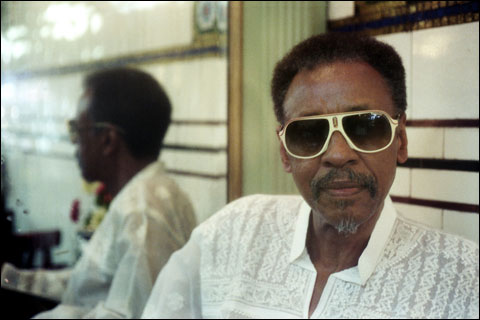
SINGULAR In a healthier music-industry climate, Threadgill would be the subject of the kind of budget-line retrospective that was once standard for the likes of Ellington, Mingus, Monk, Rollins, and Coltrane. |
The new The Complete Novus & Columbia Recordings of Henry Threadgill& Air (Mosaic) is an impractical monster. Eight CDs cover the years 1978–1996 from a major American artist who is still barely known, even to music fans. What's more, everything here is out of print. At $136 — though exquisitely produced, in the Mosaic manner — it's for adepts only.
That's too bad. Threadgill — who's still working hard and has just released a new CD with his current band, Zooid — deserves the kind of budget-reissue campaign that used to be standard among the major-label holders of prime jazz catalogues from storied indies like Verve, Blue Note, Prestige, and Riverside. In those days (the '70s, when Air were just coming into being), on a whim, you could pick up a cheap double-vinyl compilation from the likes of Coltrane, Ellington, Monk, Miles, Mingus, and Rollins. Threadgill is in their company.
Not that he's easy. Born in 1944, he came out of the '60s Chicago scene spawned by Muhal Richard Abrams and the Association for the Advancement of Creative Musicians (AACM), which also included the Art Ensemble of Chicago, Anthony Braxton, Leo Smith, and Leroy Jenkins. This was a post-Coltrane, post-Ornette avant-garde who applied new formal strategies to the sprawl of "free jazz" — they were as influenced by modern classical procedures as by bebop and R&B. Silence became a deliberate compositional strategy. There was plenty of cacophonous hurly-burly, but there were also suspended, unresolved tones and timbres — "sound," as the Art Ensemble's Roscoe Mitchell called his first album as a leader. Compositions might be based on free exploration of a limited number of notes, or on arrangements that specified nothing more than instrumentation, dynamics, and cued entrances and exits.
Threadgill, a Vietnam vet who'd played with Abrams and in a touring gospel band, made an early mark with his trio Air, one of four ensembles represented on the Mosaic set. At that point, Air were a seasoned band who had just signed with Steve Backer's Novus imprint at RCA. It's easy to hear what made them special. Bassist Fred Hopkins had a fat, pliant tone, nimble fingers, and an organic sense of line and accompaniment. Drummer Steve McCall had that particular zen sense of time — he could imply worlds of rhythm with what he didn't play. When he did come in on the beat, it was with his own beautiful tone — from cymbals to snare to kick drum — and a crisp, sparkling attack. Threadgill is most often associated with his tart, aggressive alto playing, but he is equally forceful on flute, tenor, and baritone sax. With Air, he also played a self-invented percussion instrument called the hubkaphone — a rack of various-sized hubcaps sometimes modified into the larger hubkawall.
The three-way conversation in Air was unique, but it sets out some of the essentials of Threadgill's vocabulary: staccato rhythmic-melodic cells that alternate with sprawling, ecstatic statements, and free ensemble interaction that puts every player on an equal plane, the roles of lead voice and accompaniment interchangeable.